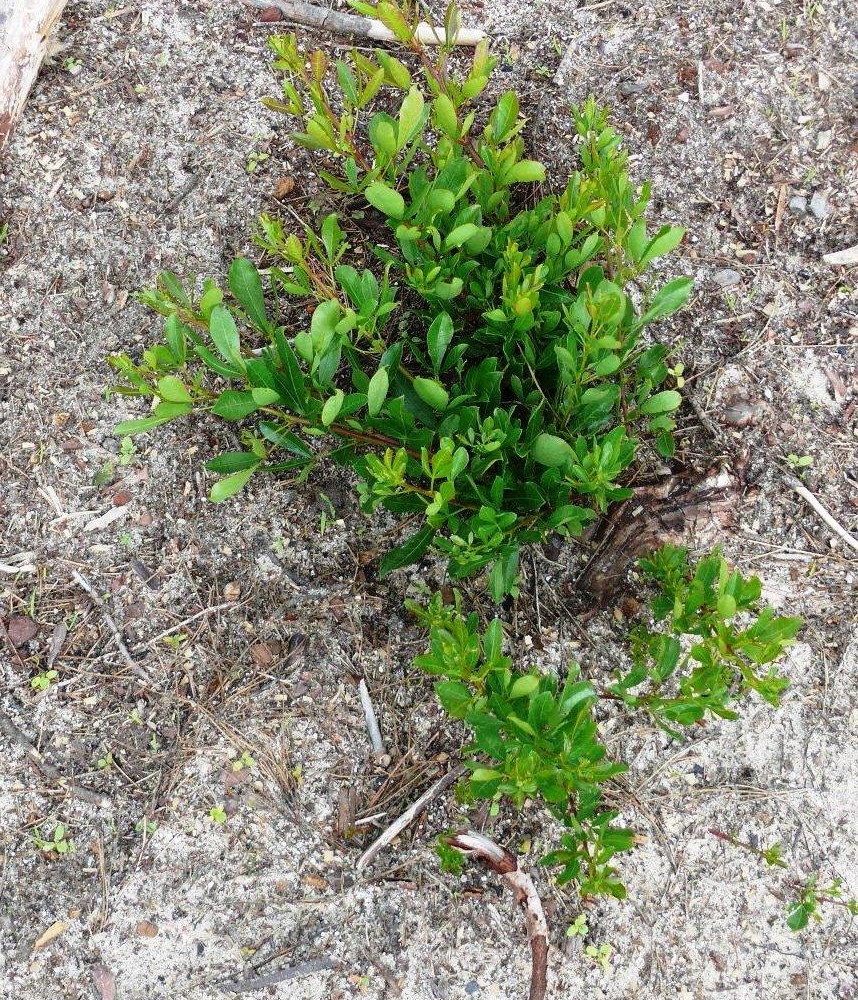Blue kuni-rhus
(Searsia glauca)

Description
Searsia glauca or the blue kuni-rhus (Syn. Rhus glauca) is a small, compact tree or bush that is commonly found along the coastline of southern Africa. Although commonest near the coast, it is also found inland among fynbos vegetation. The leaves are characteristically glossy/shiny and often a slightly glaucous (blue-green) colour. The leaves are trifoliate, with three obtuse (obcordate-cuneate) leaflets. It is dioecious, with male and female flowers on separate plants. The fruits reach a maximum diameter of 5 mm (distinguishing it from Searsia undulata which has 3mm fruits). This species occurs along the coast of South Africa, as well as in certain areas inland. It occurs from Velddrif and Cape Town in the west, eastwards into the Eastern Cape Province. Inland it occurs in the Little Karoo, around Worcester, Oudtshoorn, Baviaanskloof and northwards into Zimbabwe. Sumac is any of about 35 species of flowering plants in the genus Rhus and related genera in the cashew family (Anacardiaceae). Sumacs grow in subtropical and temperate regions throughout the world, including East Asia, Africa, and North America. Sumac is used as a spice, as a dye, and in medicine. Sumacs are dioecious shrubs and small trees in the family Anacardiaceae that can reach a height of one to ten metres (3–33 ft). The leaves are usually pinnately compound, though some species have trifoliate or simple leaves. The flowers are in dense panicles or spikes 5–30 cm (2–12 in) long, each flower very small, greenish, creamy white or red, with five petals. The fruits are reddish, thin-fleshed drupes covered in varying levels of hairs at maturity and form dense clusters at branch tips, sometimes called sumac bobs. Sumacs propagate both by seed (spread by birds and other animals through their droppings), and by new shoots from rhizomes, forming large clonal colonies. The taxonomy of Rhus has a long history, with de Candolle proposing a subgeneric classification with 5 sections in 1825. At its largest circumscription, Rhus, with over 250 species, has been the largest genus in the family Anacardiaceae. Other authors used subgenera and placed some species in separate genera, hence the use of Rhus sensu lato and Rhus sensu stricto (s.s.). One classification uses two subgenera, Rhus (about 10 spp.) and Lobadium (about 25 spp.), while at the same time Cotinus, Duckera, Malosma, Metopium, Searsia and Toxicodendron segregated to create Rhus s.s.
Taxonomic tree:







